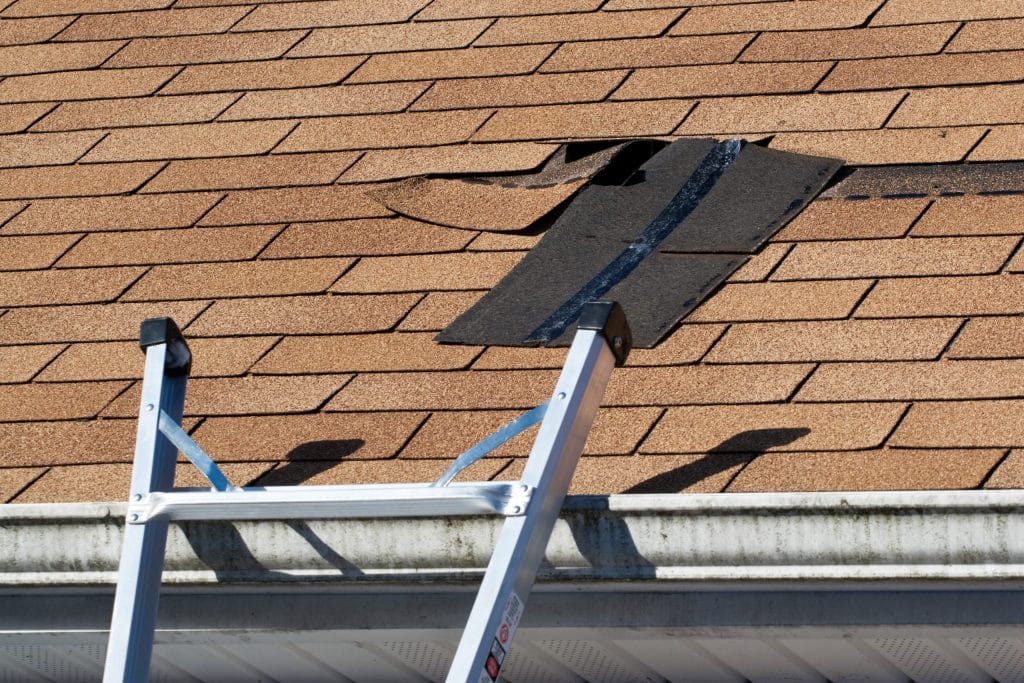
Flat roofing systems are not all the same. TPO and Modified Bitumen are two of the most popular roofing systems for flat or low-pitched roofs, and each has its merits. Here is some basic information about both roofing types to help you choose the best roofing for your commercial property.
TPO Roofing
TPO, or Thermoplastic Polyolefin, has been in use since the 1990s. It is a single-ply rubber-like membrane that covers the entire roof. TPO is made up of layers of material. Polyester fabric is sandwiched between layers of flexible polymers, working in combination to provide flexibility and strength to the membrane.
TPO comes in large rolls that can be 10’ or more in width. They’re unrolled and either screwed down on one side or fully adhered to the substrate. Sections are heat welded together, creating a watertight bond. Installation is fast but requires a well-trained installer, as the heat welds have to be done correctly to ensure the seams are solid.
A TPO roofing membrane does not wear down after exposure to potentially harmful substances such as oil and chemicals. This variety of roofing is usually white in color, resistant to UV rays, and completely recyclable. In fact, TPO single-ply roofs are considered environmentally friendly, as they do not include plasticizers when formulated.
Additionally, TPO roofing can be installed over many types of existing roofs, saving the property owner the cost and hassle of tearing off the existing roof. This is another reason they’re considered environmentally friendly, as there is no roofing to be disposed of.
Modified Bitumen Roofing
Modified Bitumen roofing has been in use since at least the 1970s. It consists of a membrane made up of several layers of asphalt or “bitumen,” rubber-based polymeric binders, and fabric or fiberglass. The layers are fused together, creating a single-ply system that’s easy to install and extremely durable.
This membrane comes from the factory in 3’ wide sections that are rolled out on the roof and heated with a torch for adherence to the substrate. This is why it’s sometimes referred to as “torch-down” roofing. There are other adhesive options, but the torch heated method is the most often used. Here, again a professional installer is critical to ensure the seams are watertight. The roofing is finished with either a smooth surface or a granular surface similar to gravel, which provides UV protection for the roofing.
Modified Bitumen is not typically applied over existing roofing materials. However, it is recyclable, so the environmental impact is lessened.
TPO vs. Modified Bitumen: Which Is Better for Your Property?
So which one is right for you? Plenty of commercial property owners opt for Modified Bitumen, as it tends to be more affordable than TPO. However, it doesn’t work over existing roofs, and its lifespan is 10-20 years. TPO, although pricier, has greater flexibility, can be installed over existing roofing, and has a lifespan of 20-30 years. Both do well in cold temperatures and have puncture-resistant qualities.
The most important factors for the success of a TPO or Modified Bitumen roofing system are quality materials and experienced installers. An experienced roofing contractor will know what suppliers create the best materials. And while both roofing types are easy to install, skilled professionals who know appropriate heating procedures for heat welds or torch down are required for a good solid roof.
Ultimately, your property’s location, weather conditions, and budget will determine your best option. When in doubt, lean on our team to help you decide between Modified Bitumen roofing and TPO roofing.
Alpine Roofing Construction Is on Your Side
At Alpine Roofing Construction, our roofing specialists are here to help with all of your roofing challenges. Whether you need a new roof, repair, or maintenance, reach out to us today. You can contact our roofers by dialing 214-272-2679 (Dallas) or 817-873-6111 (Fort Worth). You can also reach us online by filling out our convenient online contact form.
